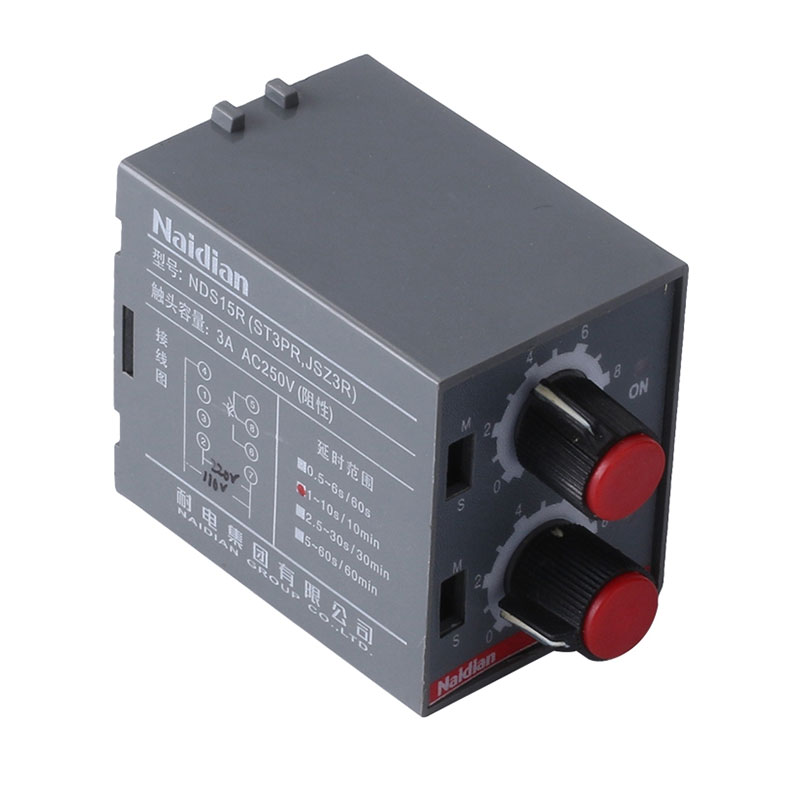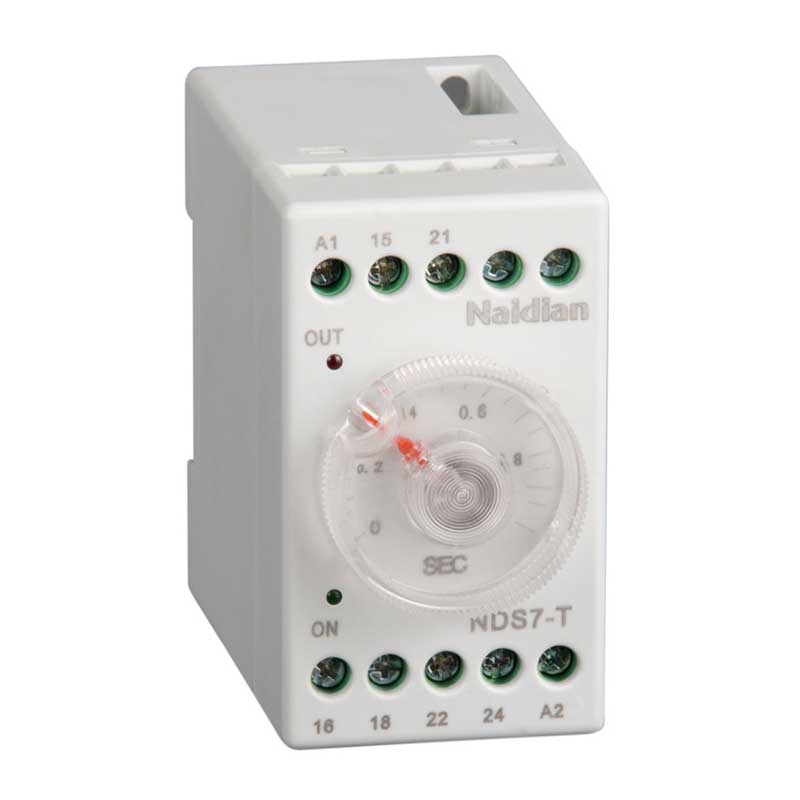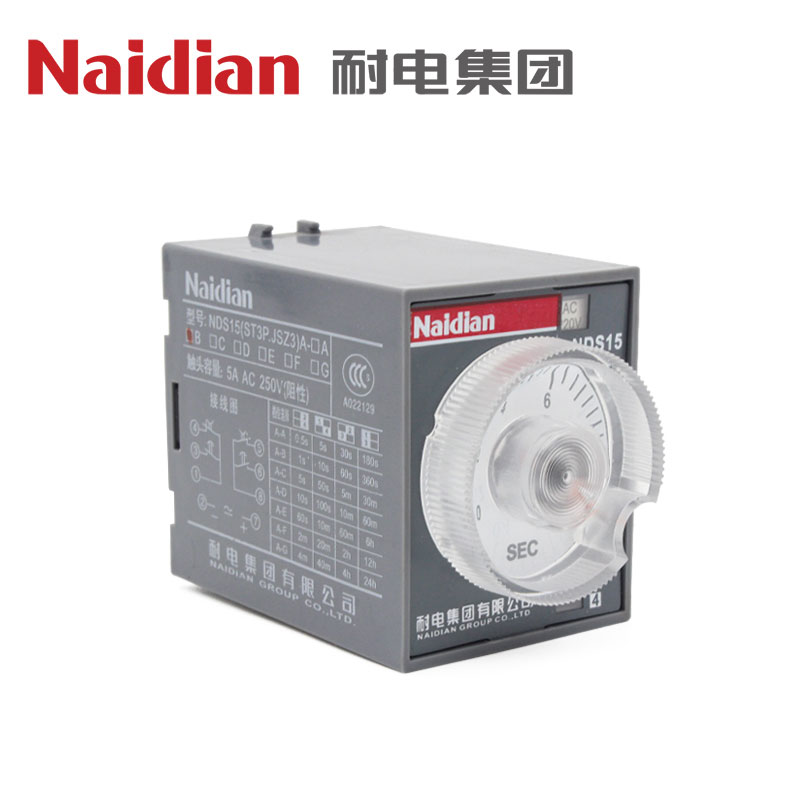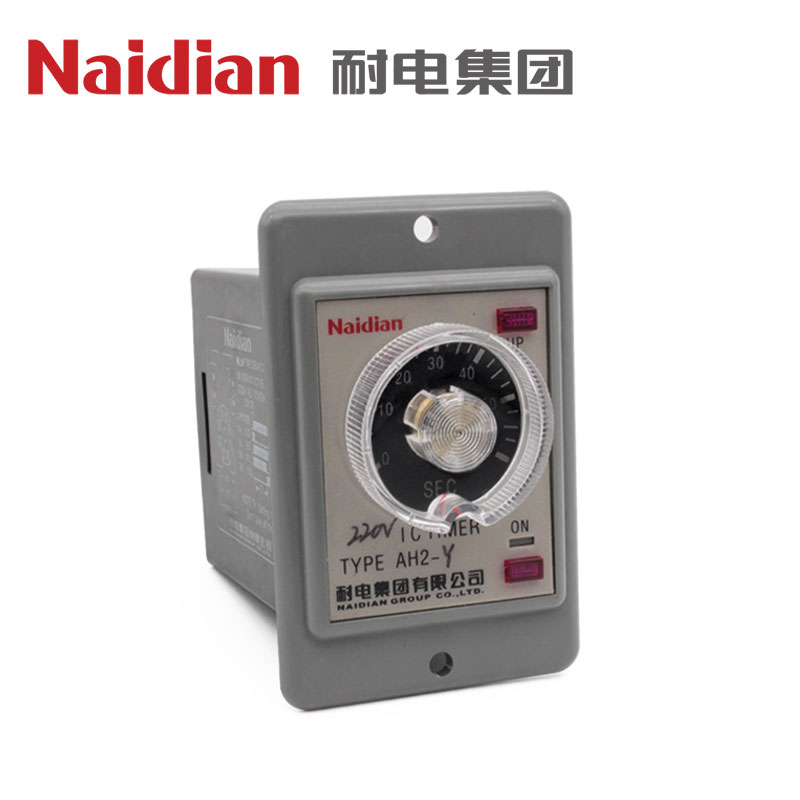What is electronic time relay?
An electronic time relay is an electronic control device that can automatically control system timing and relays. Usually used for timing control and relay control in power supply, transportation, communications, factory automation, and other fields. Electronic time relay can achieve precise timing control and relay control and has the advantages of high precision and long service life. Easy maintenance and operation, etc.
What does a electronic time relay do?
Delayed On/Off: The electronic time relay can be programmed to delay the activation or deactivation of the circuit. For example, it can be used to delay the starting of a motor after power is turned on, or to delay the closing of a circuit after a trigger signal is received.
Pulse generation: An electronic time relay can generate pulse signals of a specific duration. This is useful for controlling other devices or components such as solenoid valves or timers.
Sequential control: An electronic time relay can be used for sequential operations, where different events or actions need to occur in a specific order and with a specific time delay. They ensure that the sequence is followed accurately.
Timer function: An electronic time relay can be used as a timer for various purposes, such as time-based control of lighting systems, ventilation systems, or other equipment.
Electronic time relays often have adjustable time settings, allowing the user to set the desired delay or timing parameters. They are programmable and can flexibly control the timing of the circuit according to specific requirements. It is commonly used in industrial automation and control systems. The main function of electronic time relays is to provide time delay or timing functions in various applications.
It is important to note that the exact features and functionality of an electronic time relay may vary depending on the specific model and manufacturer.
How to connect and set up electronic time relay?
● Gather the necessary equipment:
You will need an electronic time relay, a power source (such as a battery or electrical outlet), and the device or device you want to control with the relay.
● Read the Manual:
Before you begin, carefully read the manual that comes with your electronic time relay. This will provide important information on how to properly connect and set up the relay.
● Connect the power supply:
If the electronic time relay requires an external power supply, please follow the instructions in the manual to connect to the appropriate power supply.
● Connect the device:
Connect the device or device you want to control with the relay to the corresponding terminals on the relay. Be sure to follow the instructions in the manual to ensure proper connection.
● Set Time Delay:
Use the controls on the relay to set the time delay required for the device to activate or deactivate. This may involve adjusting dials, switches, or digital settings, depending on the specific relay model.
● Test the relay:
Once everything is connected and set up, test the relay to make sure it's working properly. Start the device and observe whether the device turns on or off according to the set delay.
● Adjust as needed:
If the relay is not working as expected, double-check the connections and settings. Make necessary adjustments to ensure proper operation.
● Secure connections:
Once everything is working properly, secure connections and organize wiring to prevent any accidental disconnects or shorts.
Monitoring and Maintenance: Regularly monitor the electronic time relay to ensure it continues to operate as expected. Perform any necessary maintenance or adjustments as needed to maintain good working order.
Application scope of electronic time relay
● Industrial Automation:
Electronic time relays are used in industrial control systems to control the timing of processes, such as turning machines on and off, controlling the duration of a process, or sequencing operations.
● HVAC Systems:
Electronic time relays are used in heating, ventilation, and air conditioning systems to control the timing of fan operation, compressor cycles, and other HVAC functions.
● Lighting control:
Electronic time relays are used in lighting control systems to control the timing of lighting operations, such as turning lights on and off at specific times or controlling the duration of lighting in a specific area.
● Pump Control:
Electronic time relays are used in pump control systems to control when the pump runs, such as turning the pump on and off at a specific time or controlling the duration of the pump run.
● Motor control:
Electronic time relays are used in motor control systems to control the timing of motor operation, such as controlling the duration of motor operation or sequencing the operation of multiple motors.
● Process Control:
Electronic time relays are used in a variety of industrial processes to control the timing of specific operations, such as controlling the duration of a chemical reaction or the timing of a production process.
Overall, electronic time relays are widely used in applications that require precise timing control to automate processes, control equipment operations, and improve energy efficiency.





